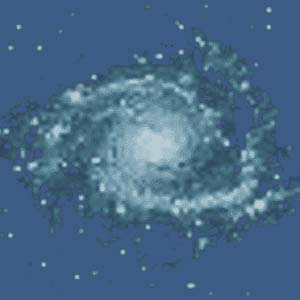| Black hole X-ray binaries contain a compact object,
presumably a black hole, and a normal star. In order to determine, if
the compact object is a black hole and not a neutron star, we would like to
measure its mass: the maximum mass of a neutron star cannot exceed 2-3 solar masses.
So far, 11 X-ray binaries have been shown to contain a compact object, whose
lower limit of mass, determined by means of the mass function, is greater
than 3 solar masses.
In addition, 14 more systems are found to exhibit the characteristic spectral shape
at high luminosities, in which a black body component coming from the neutron
star surface is not present. These sources are also believed to contain a
black hole.
 *
Spectral states of X-ray binaries *
Spectral states of X-ray binaries
X-ray spectra of black hole binaries contain two main
components: soft X-ray component (below 2 keV), originating most probably
in the accretion disk around the compact object, and hard X-ray tail,
which has a power-law shape. This power-law spectrum comes from a plasma
that is much hotter than the accretion disk.
The X-ray sources are observed in several distinct
spectral states. In the Hard State the energy spectrum can be described as a single
power law, while the disk emission is very faint. In the Soft State the disk spectrum
is dominant and the power-law tail is either below the detection limit or very steep.
The state transitions, observed in some transient sources, may be accounted for
by the changing accretion rate and changes in the geometrical configuration of
the accretion disk and hard X-ray source.
 *
Features in the hard X-ray spectra *
Features in the hard X-ray spectra
The soft X-ray spectrum is well modeled by a multicolor
disk black body, resulting from the superposition of black body spectra emitted by the
subsequent disk annuli of different temperatures.
In the hard X-ray band the power law spectrum originates from the many Compton
upscatterings of soft photons on the elctrons in a hot plasma. The flattening of
this power law spectrum in the range 3 - 20 keV is caused by the reflection of
hard X-ray photons from the underlying 'mirror' - accretion disk.
The reflected spectrum is accompanied by the fluorescent iron emission line
of the energy 6.4 - 6.7 keV, depending on the ionization state of the disk surface.
The effects of doppler broadening and gravitational redshift produce a
characteristic line profile, that can be used for the diagnostics of the environment
in the vicinity of the accreting black hole.
|

















